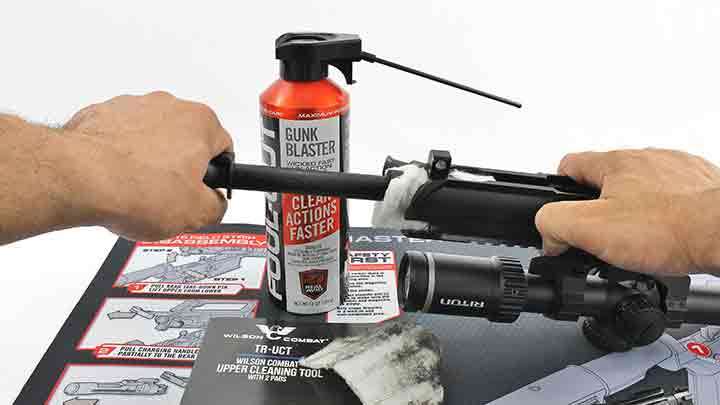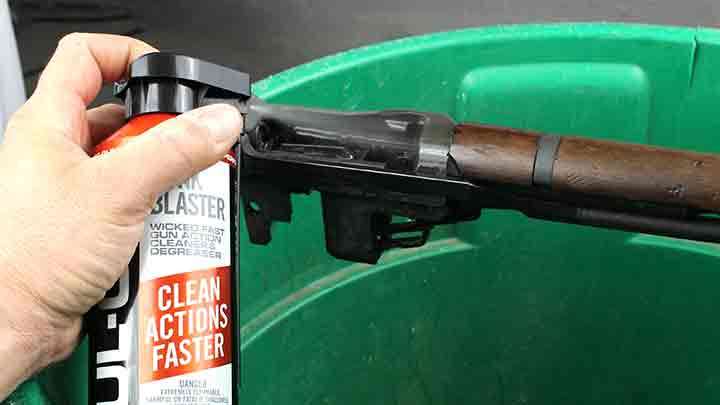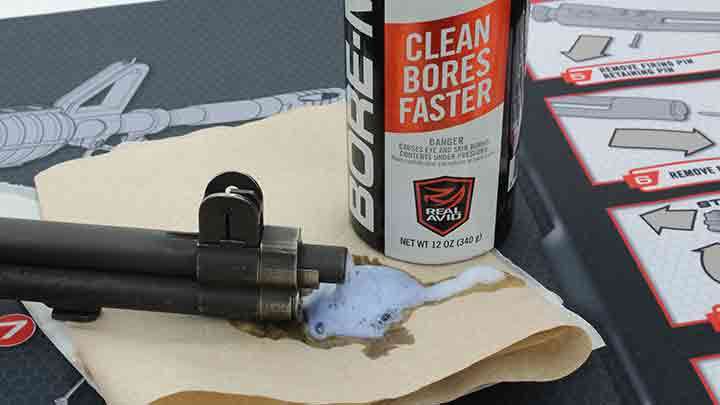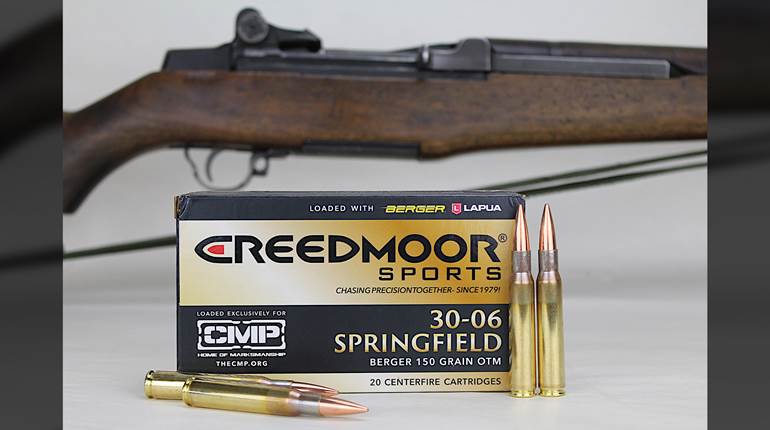
It would be an understatement to say that most seasoned shooters are opting to stay off the range these days. Facilities are packed with new gun owners and ammunition is either expensive or unavailable, so you can’t fault them. I, too, am taking a breather until things calm down, as I save as much ammunition as possible for testing new firearms and training new shooters. However, it doesn’t mean that I need to turn my back on another relaxing pastime: cleaning guns. In fact, we all have time during the year where we're not shooting as much, and these are great chances to keep your guns in peak condition.
Earlier this year, Real Avid announced that it was releasing a new series of cleaners, and I was looking for the right opportunity to try them. Joining it was Wilson Combat, with its new AR receiver cleaning tool, so it looked like all of the stars aligned, and it was time to crank up the tunes and get my hands dirty. Whenever cleaning frequency comes up in our courses at Renaissance Firearms Instruction, students typically field their question with hopes of a numerical answer.
While I wish there was a standard round count or even a formula. There just isn’t a blanket answer to the question, “How often should I clean?” The best I can do is deliver a concept, and that is “we clean our guns to preserve function and accuracy.” Realistically, the gun's purpose is going to determine this interval, as well as the area of concentration. I tell my students if the rifle doesn’t have a critical role in your security, then wait for it to start fouling.

Before I wrote this piece, I had an M1 Garand that wasn’t grouping as tight as it usually does and an AR-15 that was just starting to exhibit ejection issues. So in other words, I had everything that I needed to begin. My cleaning process starts with ensuring the guns are completely unloaded and there is no ammunition in the immediate area. Once my gun is unloaded, I fieldstrip it and turn my attention to the receiver.
In the case of the AR-15, this was an invitation to use the Real Avid Foul-Out cleaner and the Wilson Combat Upper Cleaning Tool. The Wilson tool is designed to clean the upper receiver and the charging-handle channel in one motion. The tool itself is best described as a two-sided cleaning jag, one side for the AR-15, the other for the larger AR-10. To use the tool, one wraps an included scrub pad around it and then slides it in and out of the upper receiver.
Fouling is scraped off and trapped into the medium-aggressive pad, and then the pad can be washed out or replaced. I saturated both the receiver and the pad with the Real Avid solution, and then started scrubbing away. When I was finished, I used the solution to blast out whatever was left behind, as well as that little bit of gunk that builds up under the gas tube. The Foul-Out can has a variable sprayer cap that can be used to hit a wide area or get into hard-to-reach places, like inside of a firing-pin channel.

I used a combination of both modes to blast out the AR-15 bolt carrier group, which was far easier than going at it with a series of tiny brushes. The Foul-Out was also useful for cleaning actions that I just simply didn’t feel like disassembling. This was the case with the M1 as it was running fine, but the occasion proved optimal to clean it out. With the stock removed, I racked the bolt to the rear and blasted out every grain of unburnt powder that was sitting inside.
It was oddly satisfying, to say the least. After wiping down the action, I typically turn my attention to the bore of a given firearm. The AR was shooting straight, but the M1 needed a bit of love. I have become fond of foaming bore cleaners over the past few years and was happy to see that Real Avid went this route with its formula. A rifle bore has inherent nooks and crannies in the rifling itself. As such, cleaning solutions need to be pressed into them to ensure that those 90-degree angles get thoroughly saturated.
When working with foams, I like to first fill the barrel, then scrub with a bore brush, then refill and wait. I do this to get the easy layer of carbon off, so the solution can attack the copper. I noticed that the Real Avid started working the instant it touched the metal, as indicated by the blue hue of the once white foam. After 15 minutes, I used a brass jag to push it out of the bore, and then popped the gas block off to wipe out the bit of foam that expanded into it.

Just as I gave the action of the M1 minor attention because it was relatively clean, I did the same for the AR-15’s bore. Instead of using a brush, I simply filled the bore with foam, let it work and pushed it out 15 minutes later. A good cleaning is virtually pointless unless it’s followed by proper lubrication. Real Avid’s new oil is called Gun-Max, and also comes in a high-capacity aerosol.
I’m a firm believer in slopping oil on in many applications, so it’s nice to see another manufacturer offering a voluminous lubrication system. When I got my first AR-15, a Marine Corps vet showed me how to lubricate a bolt carrier group right on the firing line. I remember his words like it was yesterday: “Spray every inch of it and then just give it one shake, that’s how it was designed to run.” I’ve taken that approach with every AR I’ve owned and have always been happy with the outcome.
The Real Avid solution bubbled up on contact, almost like it was carbonated, and appeared to grip the metal as advertised. Aside from the bolt-carrier group, I hit the charging-handle channel and ran a saturated patch down the bore, followed by a loose-fitting dry one. I gave the M1 Garand the same bore treatment and put a light coat on all of the parts that make up the magazine system.

After reassembling and confirming function, I stood back and admired my handiwork. Honestly, the cleaning of both of those rifles was long overdue. It’s a task that is performed not only for the care of the firearm, but for the rifleman as well. Cleaning a rifle is a ritual, and if you do it enough, your hands just take over and your mind opens up.
As I cleaned that old M1 and that modern AR, I was taken back to firing my first black rifle and the story about the Marine who taught me how to lubricate it. In a way, it takes me to the same zen-like state that shooting does, except I don’t have to leave my house or take out a second mortgage for a few boxes of 5.56x45 mm NATO. Enjoy this downtime, get back to basics and above all, take care of your gear.





































